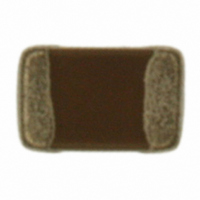ECJ-2F60J226M Panasonic - ECG, ECJ-2F60J226M Datasheet - Page 14

ECJ-2F60J226M
Manufacturer Part Number
ECJ-2F60J226M
Description
CAP CERAMIC 22UF 6.3V 0805 X6S
Manufacturer
Panasonic - ECG
Series
ECJr
Datasheets
1.ECJ-RVB1H332M.pdf
(6 pages)
2.ECJ-RVB1H332M.pdf
(2 pages)
3.ECJ-RVB1H332M.pdf
(1 pages)
4.ECJ-RVB1H332M.pdf
(3 pages)
5.ECJ-2F60J226M.pdf
(24 pages)
Specifications of ECJ-2F60J226M
Capacitance
22µF
Voltage - Rated
6.3V
Tolerance
±20%
Temperature Coefficient
X6S
Mounting Type
Surface Mount, MLCC
Operating Temperature
-55°C ~ 105°C
Features
Low ESR
Applications
General Purpose
Package / Case
0805 (2012 Metric)
Size / Dimension
0.079" L x 0.049" W (2.00mm x 1.25mm)
Thickness
1.25mm
Lead Free Status / RoHS Status
Lead free / RoHS Compliant
Ratings
-
Lead Spacing
-
Other names
ECJ2F60J226M
PCC2477TR
PCC2477TR
CLASSIFICATION
SUBJECT
3.
3- 1.Storage
3- 2.Chip Mounting Consideration
Note ;
2-2-5. Mounting Density and Spaces
Precautions for Assembly
(1) The Capacitors before mounting on PCB shall be stored between 5 - 40°C and 20 - 70% RH, not under severe
(2) If stored in a place that is humid, dusty, or contains corrosive gasses (hydrogen sulfide, sulfurous acid,
(3) Do not store components longer than 6 months. Check the solderability of products that have been stored for
(4) The Capacitors of high dielectric constant series (Class 2, Characteristic B,X7R,X5R and F,Y5V) change in
(5) When the initial capacitance is measured, the Capacitors shall be heat-treated at 150+0/-10℃ for 1 hour and
(1) When mounting the Capacitors/components on a PC board, the capacitor bodies shall be free from excessive
(2) Maintenance and inspections for Chip Mounter must be performed regularly.
(3) If the bottom dead center of the vacuum nozzle is too low, the Capacitor is cracked by an excessive force at the
(4) The closing dimensions of positioning chucks shall be controlled and the maintenance, checks and replacement
(5) Maximum stroke of the nozzle shall be adjusted so that the maximum bending of PC board does not exceed
conditions of high temperature and humidity.
hydrogen chloride and ammonia, etc.), the solderability of terminal electrodes may deteriorate.
In addition, storage in a place subjected to heating and/or exposed to direct sunlight will cause deformed tapes
and reels. and component sticking to tapes, both of which can result in mounting problems.
more than 6 months before use.
capacitance with the passage of time, “Capacitance aging”, due to the inherent characteristics of ceramic
dielectric materials. The changed capacitance can be recovered by heat treatment to each initial value at the
time of shipping. (See 2. Operating Condition and Circuit Design, 2-1-7. Capacitance aging)
then subjected to ordinary temperature and humidity for 48±4 hours before measuring the initial value.
impact loads such as mechanical impact or stress in the positioning, pushing force and displacement of vacuum
nozzles at the time of mounting.
time of mounting.
The following precautions and recommendations are for your reference in use.
(a) Set and adjust the bottom dead center of the vacuum nozzles to the upper surface of the PC board after
(b) Set the pushing force of the vacuum nozzle at the time of mounting to 1 to 3 N in static load.
(c) For double surface mounting, apply a supporting pin on the rear surface of the PC board to suppress the
(d) Adjust the vacuum nozzles so that their bottom dead center at the time of mounting is not too low.
of positioning chucks shall be regularly performed to prevent chipping or cracking of the Capacitors caused by
mechanical impact at the time of positioning due to worn positioning chucks.
0.5mm at 90mm span. The PC board shall be supported by means of adequate supporting pins.
If components are arranged in too narrow spaces, the
components are affected by Solder bridges and
Solder balls. Each space between components
should be carefully determined.
Single surface
mounting
Double surface
mounting
correcting the warp of the PC board.
bending of the PC board in order to minimize the impact of the vacuum nozzles. The typical examples are
shown in the table below.
Common Specification ( Precautions for Use)
Multilayer Ceramic Chip Capacitor
SPECIFICATIONS
Separation
of solder
Prohibited mounting
Crack
Crack
Supporting
pin
Supporting
pin
Recommended mounting
The supporting pin must not
be necessarily positioned
beneath the capacitor
No.
PAGE
DATE
151S-ECJ-SS018E
Apr. 1, 2008
5 of 9
.
















